Evaluation of Public Transportation System through Social Network Analysis Approach
Abstract
1. Introduction
2. Literature Review
3. Methodology
3.1. Social Network Analysis
3.1.1. Centrality
3.1.2. Broker
4. Study Area
4.1. Population Distribution
4.2. Public Transportation Stations
4.3. Public Transportation Ridership
5. Evaluation of the Public Transportation Network
5.1. Degree Centrality
5.2. Betweenness Centrality
5.3. Broker
5.3.1. Coordinator
5.3.2. Consultant
5.3.3. Representative and Gatekeeper
5.3.4. Liaison
6. Application
7. Conclusions
7.1. Discussion and Implications
7.2. Limitations and Future Research
Author Contributions
Funding
Institutional Review Board Statement
Informed Consent Statement
Data Availability Statement
Conflicts of Interest
References
- United Nations (UN). Available online: http://news.un.org/en/story/2023/07/1139162 (accessed on 30 July 2023).
- International Energy Agency (IEA). Available online: https://www.iea.org/energy-system/transport/electric-vehicles (accessed on 1 August 2024).
- International Energy Agency (IEA). Global EV Outlook 2024; IEA: Paris, France, 2024. [Google Scholar]
- Chen, W.; Lei, Y. Path Analysis of Factors in Energy-related CO2 Emissions from Beijing’s Transportation Sector. Transp. Res. Part D 2017, 50, 473–487. [Google Scholar] [CrossRef]
- Nes, R.V.; Hamerslag, R.; Immers, B.H. Design of Public Transport Networks. Transp. Res. Rec. 1988, 1202, 74–83. [Google Scholar]
- Manser, P.; Becker, H.; Horl, S.; Axhausen, K.W. Designing a Large-scale Public Transport Network Using Agent-based Microsimulation. Transp. Res. Part A 2020, 137, 1–15. [Google Scholar] [CrossRef]
- Alkharabsheh, A.; Moslem, S.; Duleba, Z. Evaluating Passenger Demand for Development of the Urban Transport System by an AHP Model with the Real-world Application of Amman. Appl. Sci. 2019, 9, 4759. [Google Scholar] [CrossRef]
- Moslem, S.; Alkharabsheh, A.; Ismael, K.; Duleba, S. An Integrated Decision Support Model for Evaluating Public Transport Quality. Appl. Sci. 2020, 10, 4158. [Google Scholar] [CrossRef]
- Alkharabsheh, A.; Moslem, S.; Oubahman, L.; Duleba, S. An Integrated Approach of Multi-criteria Decision-making and Grey Theory for Evaluating Urban Public Transportiaon System. Sustainability 2021, 13, 2740. [Google Scholar] [CrossRef]
- Betterbury, S. Environmental Activism and Social Networks: Campaigning for Bicycles and Alternative Transport in West London. Ann. Am. Acad. Political Soc. Sci. 2003, 590, 150–169. [Google Scholar] [CrossRef]
- Errampalli, M.; Patil, K.S.; Parsad, C.S.R.K. Evaluation of Integration Between Public Transportation Modes by Developing Sustainability Index for Indian Cities. Case Stud. Transp. Policy 2020, 8, 180–187. [Google Scholar] [CrossRef]
- Ortego, A.; Valero, A.; Abadias, A. Environmental Impacts of Promoting New Public Transport Systems in Urban Mobility: A Case Study. J. Sustain. Dev. Energy Water Environ. Syst. 2017, 5, 377–395. [Google Scholar] [CrossRef]
- Alkheder, S. Promoting Public Transport as a Strategy to Reduce GHG Emissions from Private Vehicles in Kuwait. Environ. Chall. 2021, 3, 100075. [Google Scholar] [CrossRef]
- Jing, Q.L.; Liu, H.Z.; Yu, W.Q.; He, X. The Impact of Public Transportation on Carbon Emissions-From the Perspective of Energy Consumption. Sustainability 2022, 14, 6248. [Google Scholar] [CrossRef]
- Duleba, S.; Moslem, S. Examining Pareto Optimality in Analytic Hierarchy Process on Real Data: An Application in Public Transport Service Development. Expert Syst. Appl. 2019, 116, 21–30. [Google Scholar] [CrossRef]
- Moslem, S.; Duleba, S. Sustainable Urban Transport Development by Applying a Fuzzy-AHP Model: A Case Study from Mersin, Turkey. Urban Sci. 2019, 3, 55. [Google Scholar] [CrossRef]
- Moslem, S.; Celikbilek, Y. An Integrated Grey AHP-MOORA Model for Ameliorating Public Transport Service Quality. Eur. Transp. Res. Rev. 2020, 12, 68. [Google Scholar] [CrossRef]
- Li, J.; Chen, X.; Li, X.; Guo, X. Evaluation of Public Transportation Operation Based on Data Envelopment Analysis. Procedia-Soc. Behav. Sci. 2013, 69, 148–155. [Google Scholar] [CrossRef]
- Yap, M.; Cats, O.; Arem, B. Crowding Valuation in Urban Tram and Bus Transportation Based on Smart Card Data. Transp. A Transp. Sci. 2020, 16, 23–42. [Google Scholar] [CrossRef]
- Zhang, C.; Juan, Z.; Luo, Q.; Xiao, G. Performance Evaluation of Public Transit Systems Using a Combined Evaluation Method. Transp. Policy 2016, 45, 156–167. [Google Scholar] [CrossRef]
- Tomej, K.; Liburd, J.J. Sustainable Accessibility in Rural Destinations: A Public Transport Network Approach. J. Sustain. Tour. 2020, 28, 222–239. [Google Scholar] [CrossRef]
- Zhang, Y.; Li, W.; Deng, H.; Li, Y. Evaluation of Public Transport-Based Accessibility to Health Facilities Considering Spatial Heterogeneity. J. Adv. Transp. 2020, 1, 7645153. [Google Scholar] [CrossRef]
- Haznagy, A.; Fi, I.; London, A.; Nemeth, T. Complex Network Analysis of Public Transportation Networks: A Comprehensive Study. In Proceedings of the 2015 International Conference on Models and Technologies for Intelligent Transportation Systems (MT-ITS), Budapest, Hungary, 3–5 June 2015; IEEE: New York, NY, USA, 2015; pp. 371–378. [Google Scholar]
- Cheng, Y.Y.; Lee, R.K.W.; Lim, E.P.; Zhu, F. Measuring Centralities for Transportation Networks Beyond Structures. In Applications of Social Media and Social Network Analysis; Springer: Berlin/Heidelberg, Germany, 2015; pp. 23–39. [Google Scholar]
- Song, M.G.; Yeo, G.T. Analysis of the Air Transport Network Characteristics of Major Airports. Asian J. Shipp. Logist. 2017, 33, 117–125. [Google Scholar] [CrossRef]
- Prabhakar, N.; Anbarasi, L.J. Exploration of the Global Air Transport Network Using Social Network. Soc. Netw. Anal. Min. 2021, 11, 1–12. [Google Scholar] [CrossRef]
- Lee, J.; Seo, D. Accuracy of Regional Centrality Using Social Network Analysis: Evidence from Commuter Flow in South Korea. Int. J. Geo-Inf. 2021, 10, 642. [Google Scholar] [CrossRef]
- Barnes, J. Class and Committees in a Norwegian Island Parish. Hum. Relat. 1954, 7, 39–58. [Google Scholar] [CrossRef]
- Yang, G.; Yang, Y.; Gong, G.; Gui, Q. The Spatial Network Structure of Tourism Efficiency and Its Influencing Factors in China: A Social Network Analysis. Sustainability 2022, 14, 9921. [Google Scholar] [CrossRef]
- Otte, E.; Rousseau, R. Social Network Analysis: A Powerful Strategy, also for the Information Sciences. J. Inf. Sci. 2002, 28, 441–453. [Google Scholar] [CrossRef]
- Assaad, R.; El-adaway, I.H. Enhancing the Knowledge of Construction Business Failure: A Social Network Analysis Approach. J. Constr. Eng. Manag. 2020, 146, 04020052. [Google Scholar] [CrossRef]
- Lee, C.; Chong, H.; Liao, P.; Wang, X. Critical Review of Social Network Analysis Applications in Complex Project Management. J. Manag. Eng. 2018, 34, 04017061. [Google Scholar] [CrossRef]
- El-adaway, I.H.; Ibrahim, S.A.; Eric, V. Social Network Analysis Approach for Improved Transportation Planning. J. Infrastruct. Syst. 2017, 23, 05016004. [Google Scholar] [CrossRef]
- Zhou, Z.; Irizarry, J. Integrated Framework of Modified Accident Energy Release Model and Network Theory to Explore the Full Complexity of the Hangzhou Subway Construction Collapse. J. Manag. Eng. 2016, 32, 05016013. [Google Scholar] [CrossRef]
- Freeman, L.C.; Roeder, D.; Mulholland, R.B. Centrality in Social Networks: II. Experimental results. Soc. Netw. 1979, 2, 119–141. [Google Scholar] [CrossRef]
- Grando, F.; Noble, D.; Lamb, L.C. An Analysis of Centrality Measures for Complex and Social Networks. In Proceedings of the IEEE Global Communications Conference, Washington, DC, USA, 4–8 December 2016; pp. 1–6. [Google Scholar]
- Gould, R.V.; Fernandez, R.M. Structures of Mediation: A Formal Approach to Brokerage in Transaction Networks. Sociol. Methodol. 1989, 19, 89–126. [Google Scholar] [CrossRef]
- Ali, A.A.; Eliasson, J. The Value of Additional Data for Public Transport Origin-destination Matrix Estimation. Public Transp. 2022, 14, 419–439. [Google Scholar] [CrossRef]
- Korean Statistical Information Service (KOSIS). Available online: https://kosis.kr/index/index.do (accessed on 1 July 2023).

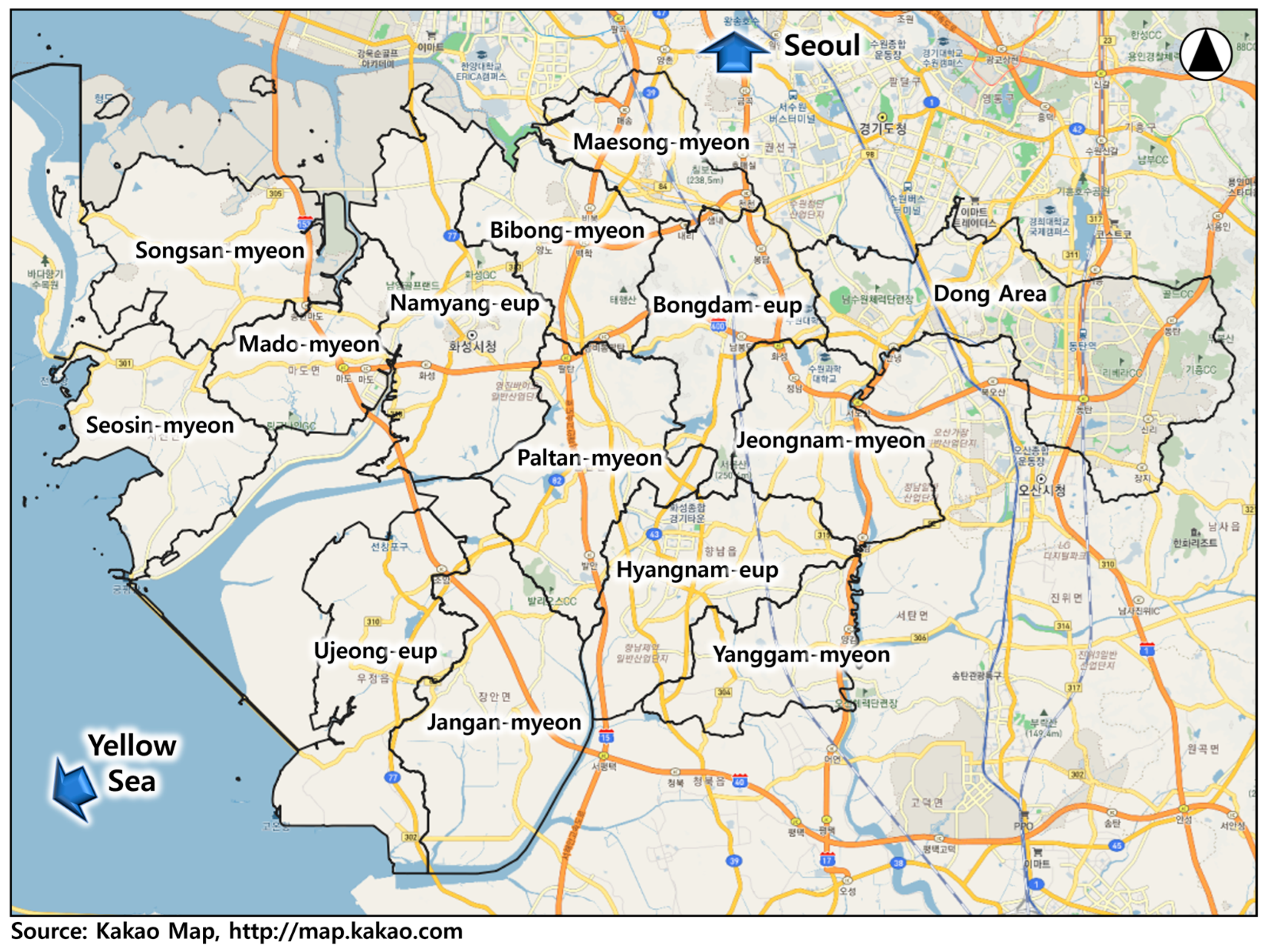
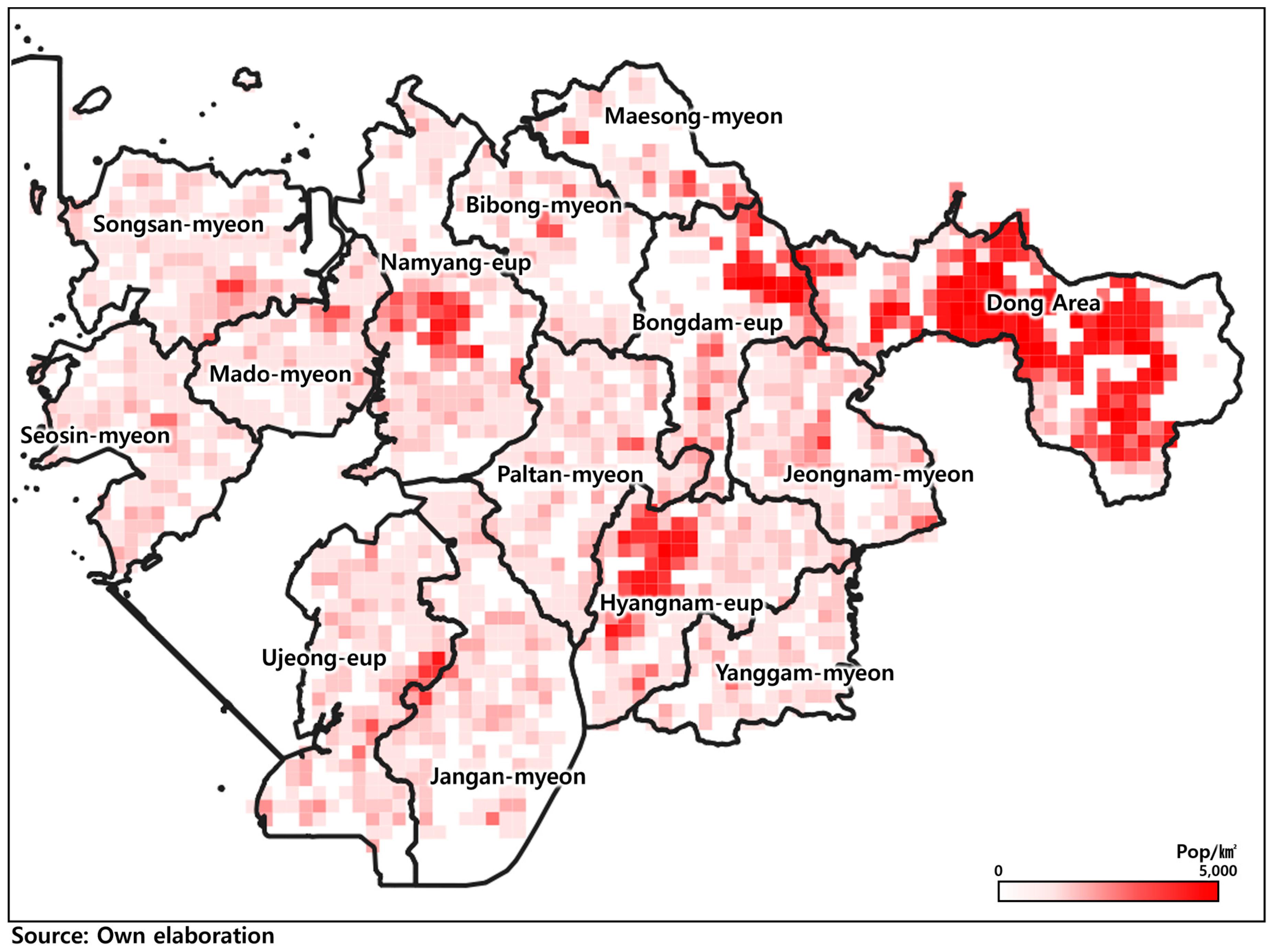
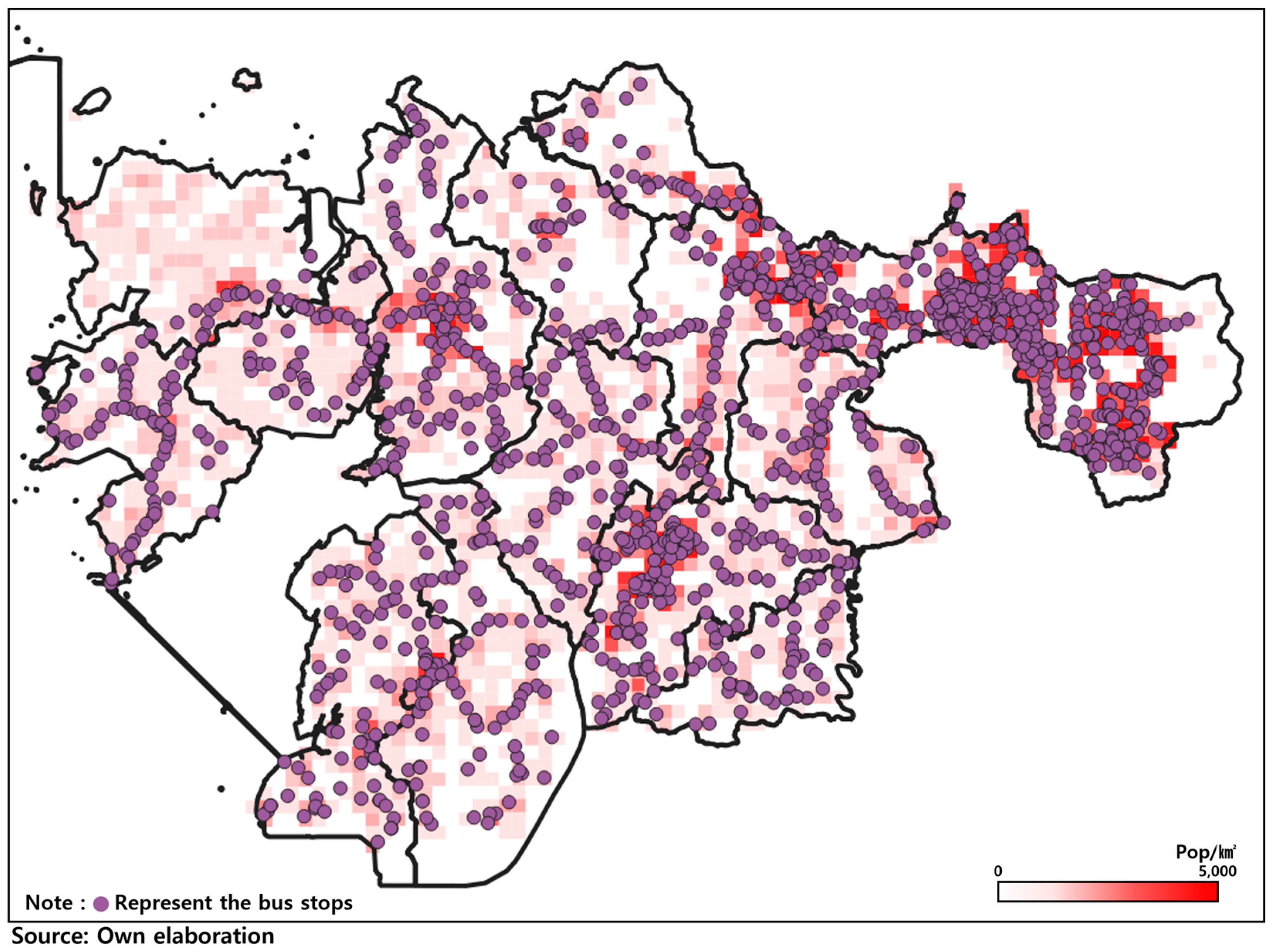
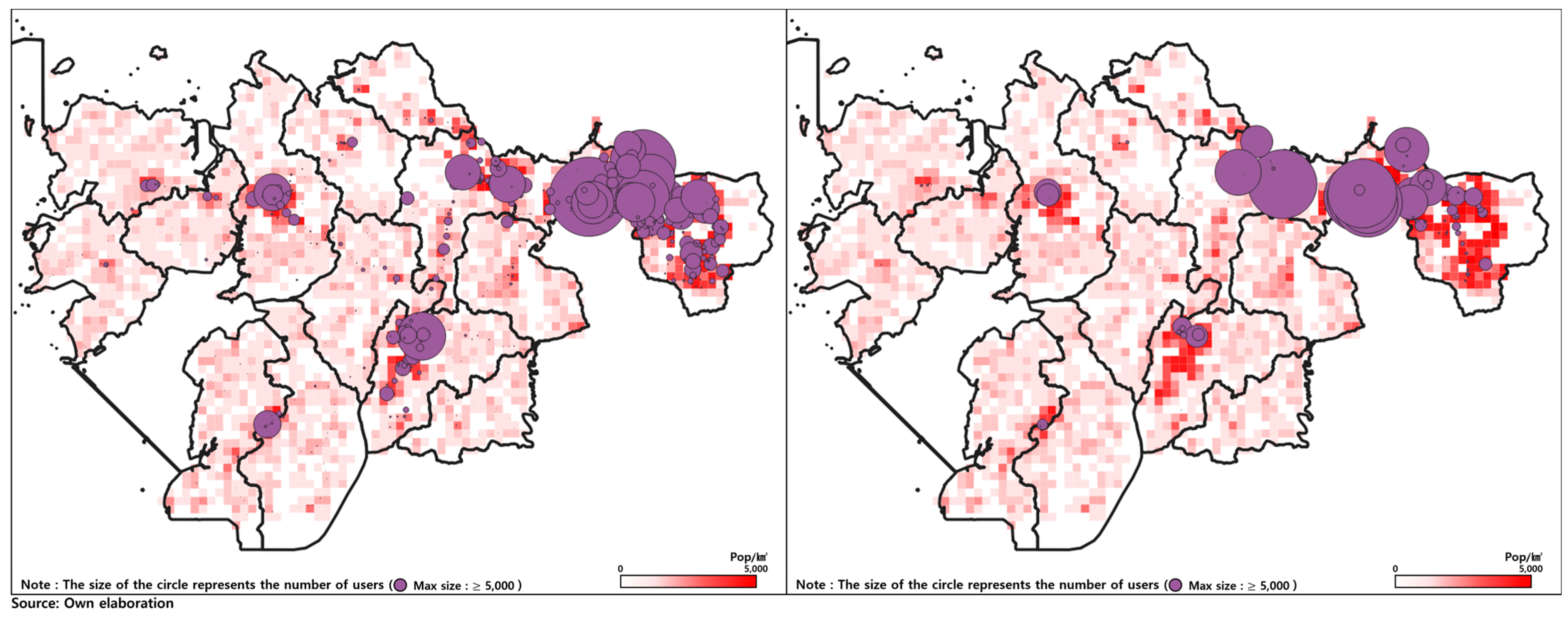
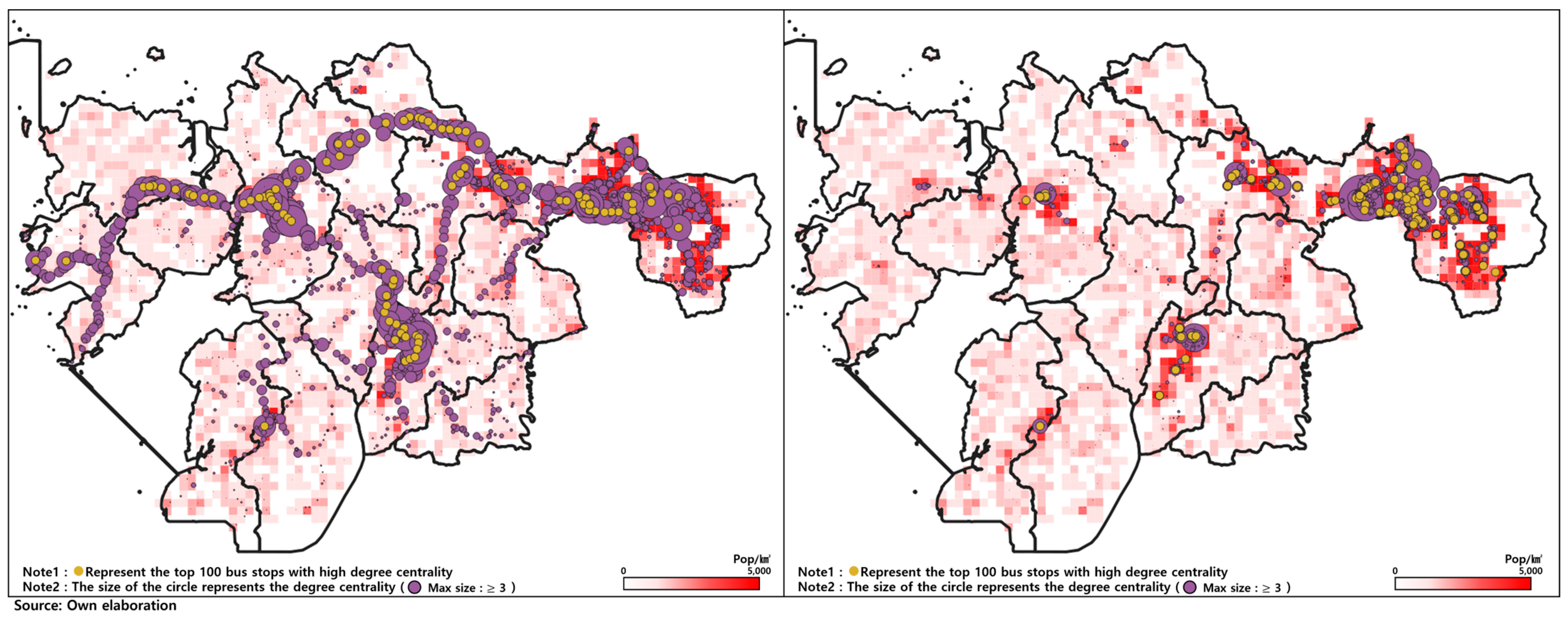

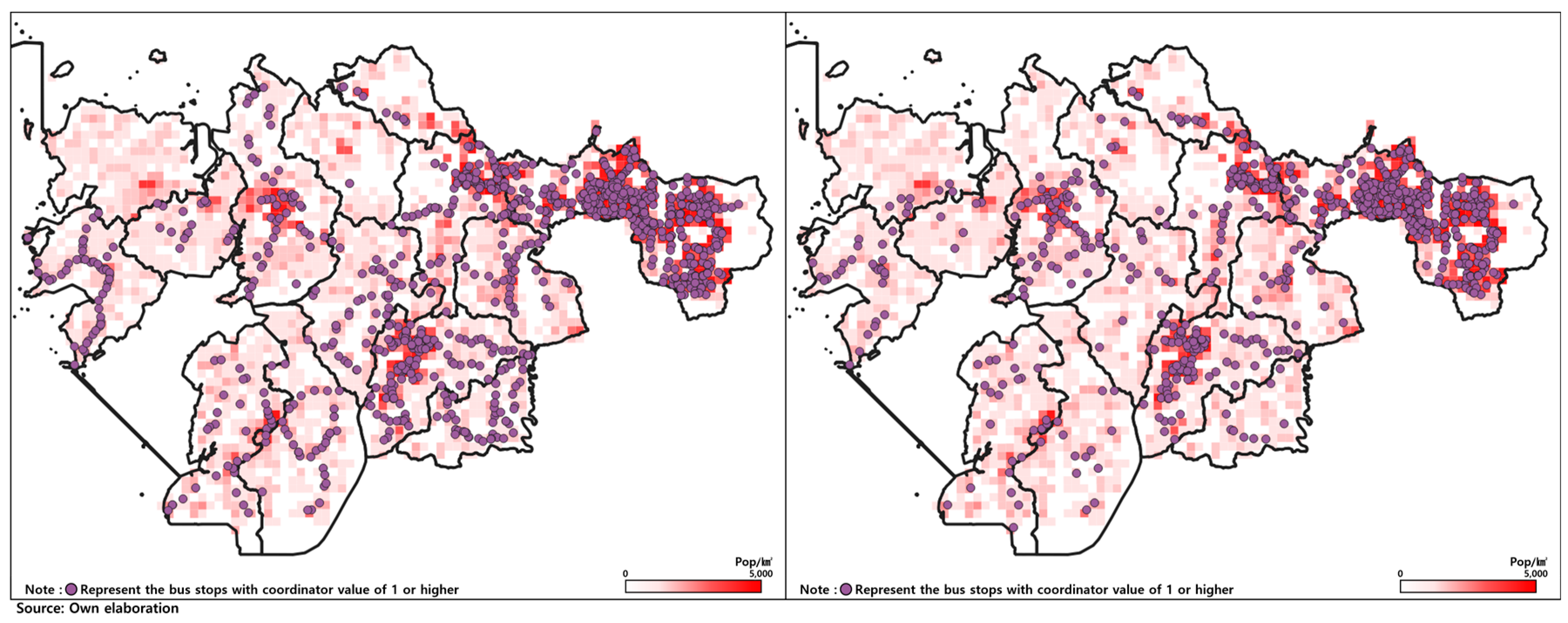
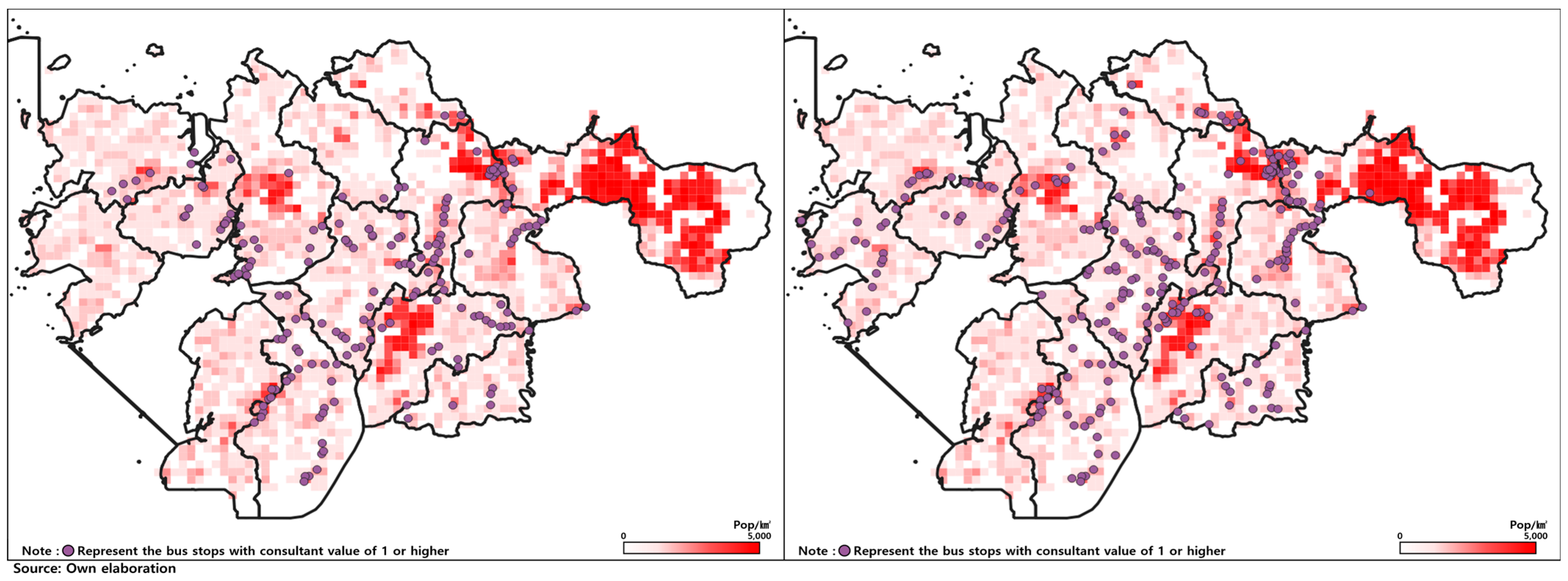

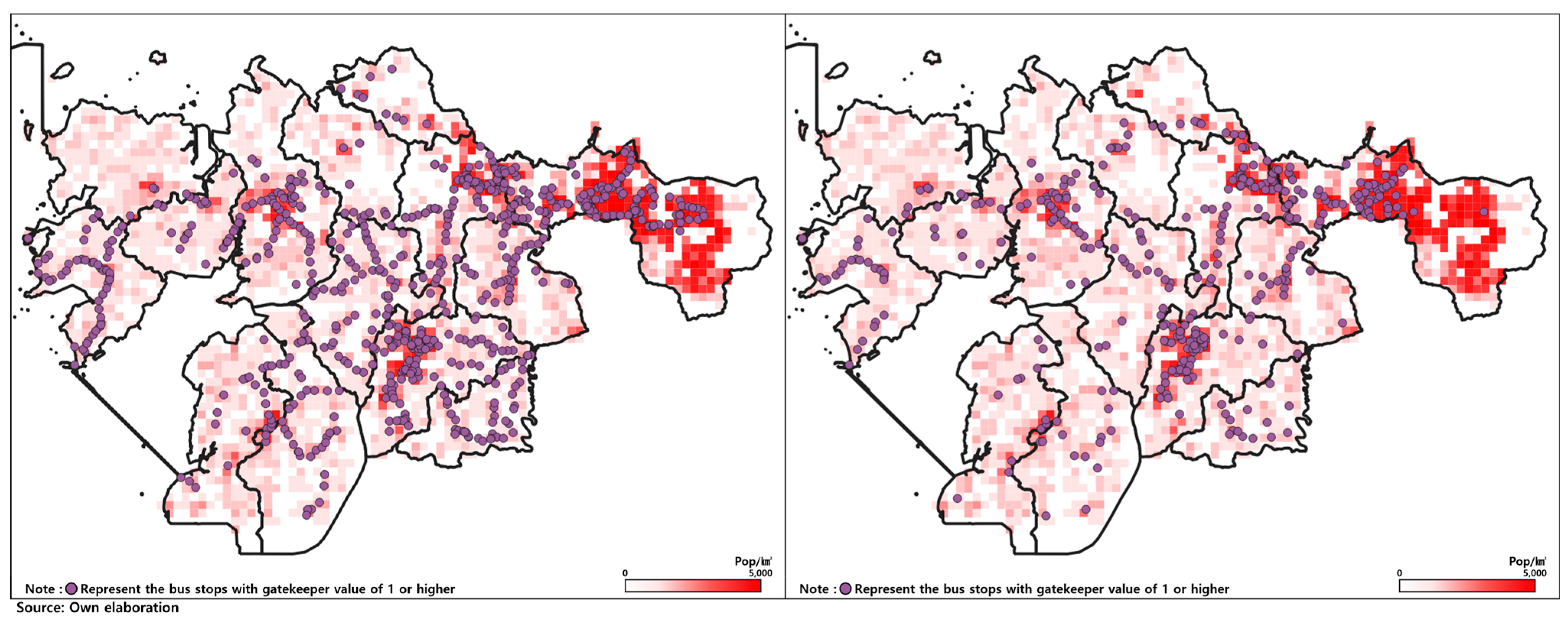
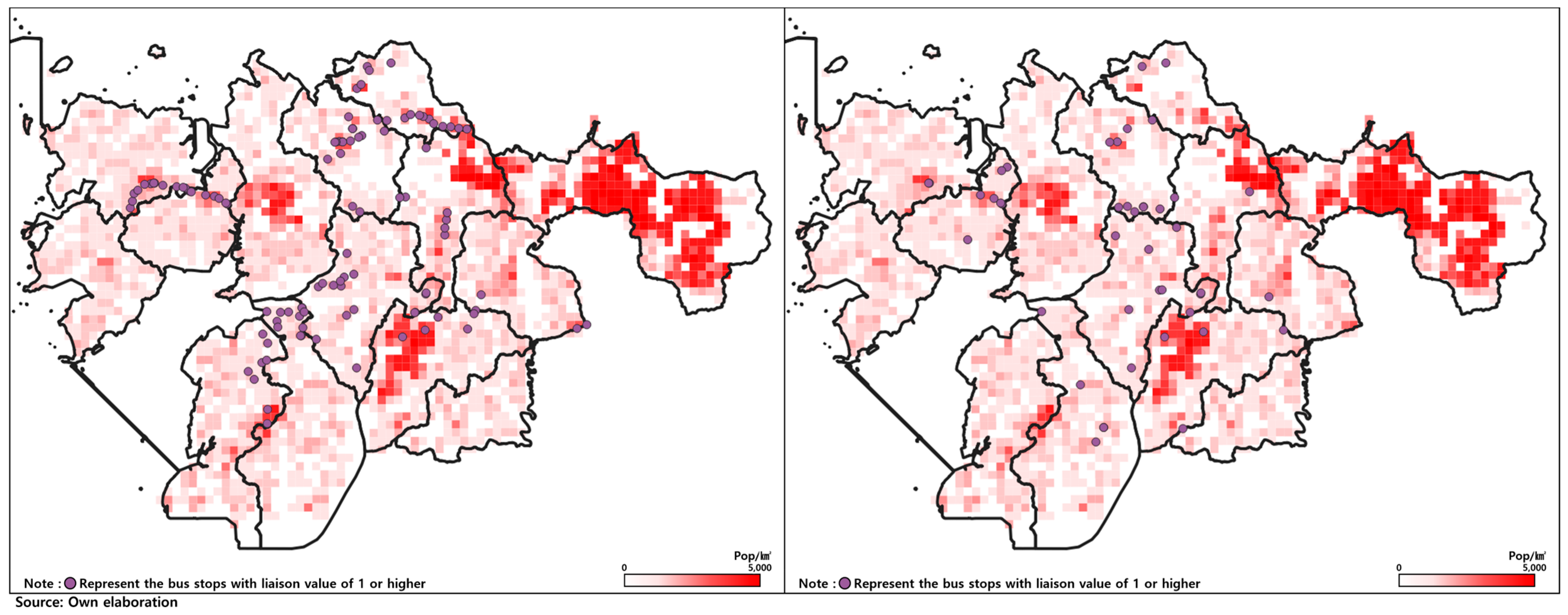
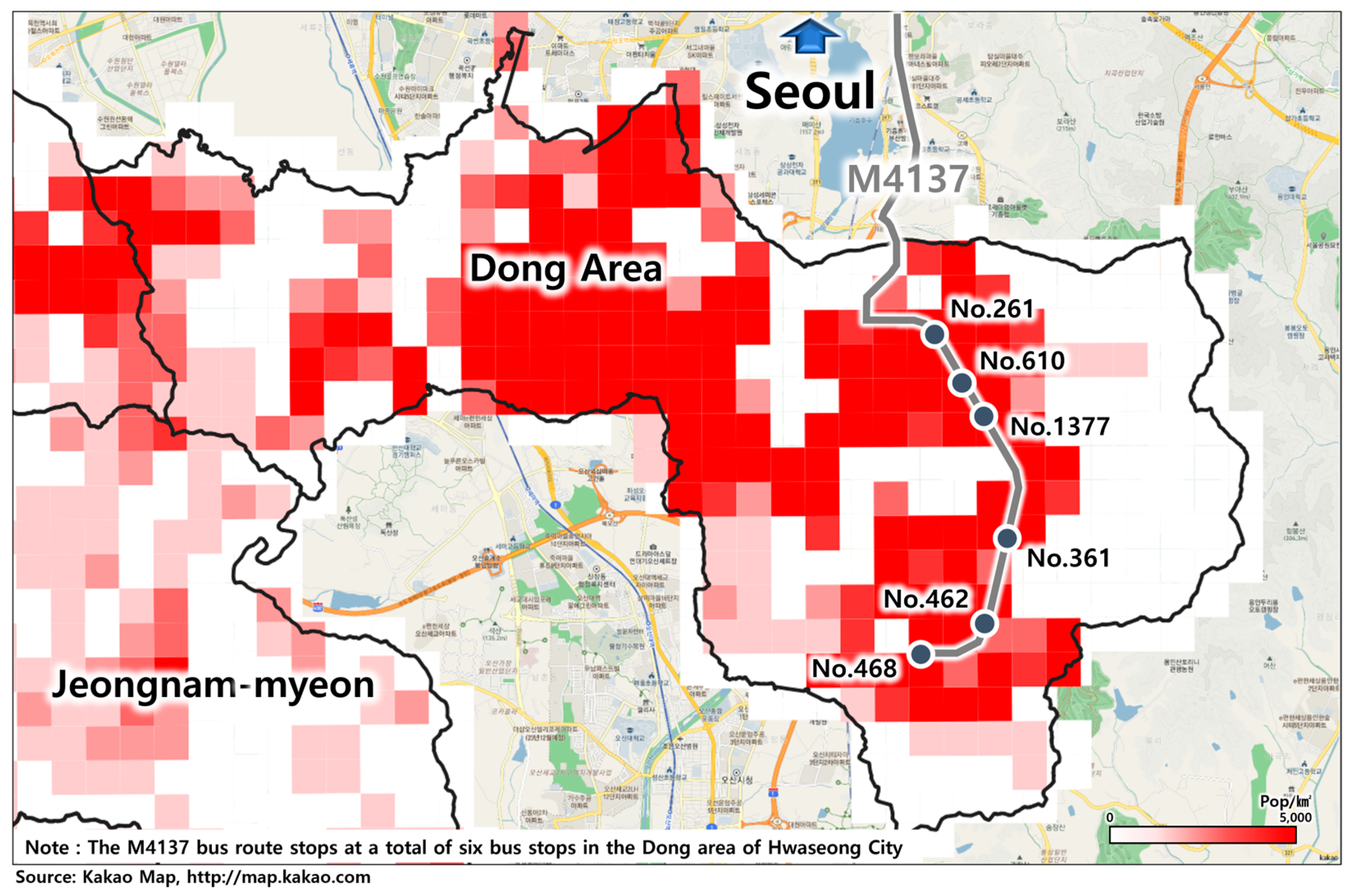
| Author | Method | Content |
|---|---|---|
| Moslem and Celikbilek (2020) [17] | Grey-AHP |
|
| Duleba and Moslem (2019) [15] | AHP |
|
| Moslem and Duleba (2019) [16] | Fuzzy-AHP | |
| Alkharabsheh et al. (2019) [7] | AHP-BWM |
|
| Moslem et al. (2020) [8] | AHP-MOORA | |
| Alkharabsheh et al. (2021) [9] | Grey-AHP |
| Station Name | Boardings (Number of People) | Ratio (%) |
|---|---|---|
| Byeongjeom station intersection | 5225 | 16.4 |
| The rear gate of Byeongjeom station | 3009 | 9.5 |
| Sinchang mission hill | 1699 | 5.3 |
| Byeongjeom station | 1541 | 4.8 |
| Eastern branch office | 1534 | 4.8 |
| Suwon university | 1008 | 2.1 |
| Homeplus; Beolmal elementary school | 871 | 0.6 |
| Bongdam-eup administrative welfare center | 669 | 0.6 |
| Banwolri keungogae | 646 | 0.5 |
| Umi jeil. Jeonhari church | 536 | 0.5 |
| Total | 31,804 | 100.0 |
| Station No. | Based on Route | Based on Passenger Volume | ||
|---|---|---|---|---|
| Coordinator | Representative | Coordinator | Representative | |
| 261 | 29.187 | 0.165 | 29.258 | 0.143 |
| 361 | 28.487 | 0.189 | 29.003 | 0.222 |
| 462 | 28.525 | 0.184 | 29.719 | 0.000 |
| 468 | 29.112 | 0.188 | 29.719 | 0.000 |
| 610 | 18.227 | 3.562 | 26.697 | 0.937 |
| 1377 | 29.242 | 0.148 | 29.097 | 0.193 |
Disclaimer/Publisher’s Note: The statements, opinions and data contained in all publications are solely those of the individual author(s) and contributor(s) and not of MDPI and/or the editor(s). MDPI and/or the editor(s) disclaim responsibility for any injury to people or property resulting from any ideas, methods, instructions or products referred to in the content. |
© 2024 by the authors. Licensee MDPI, Basel, Switzerland. This article is an open access article distributed under the terms and conditions of the Creative Commons Attribution (CC BY) license (https://creativecommons.org/licenses/by/4.0/).
Share and Cite
Koo, J.; Lee, G.; Kim, S.; Choo, S. Evaluation of Public Transportation System through Social Network Analysis Approach. Sustainability 2024, 16, 7212. https://doi.org/10.3390/su16167212
Koo J, Lee G, Kim S, Choo S. Evaluation of Public Transportation System through Social Network Analysis Approach. Sustainability. 2024; 16(16):7212. https://doi.org/10.3390/su16167212
Chicago/Turabian StyleKoo, Jahun, Gyeongjae Lee, Sujae Kim, and Sangho Choo. 2024. "Evaluation of Public Transportation System through Social Network Analysis Approach" Sustainability 16, no. 16: 7212. https://doi.org/10.3390/su16167212
APA StyleKoo, J., Lee, G., Kim, S., & Choo, S. (2024). Evaluation of Public Transportation System through Social Network Analysis Approach. Sustainability, 16(16), 7212. https://doi.org/10.3390/su16167212






